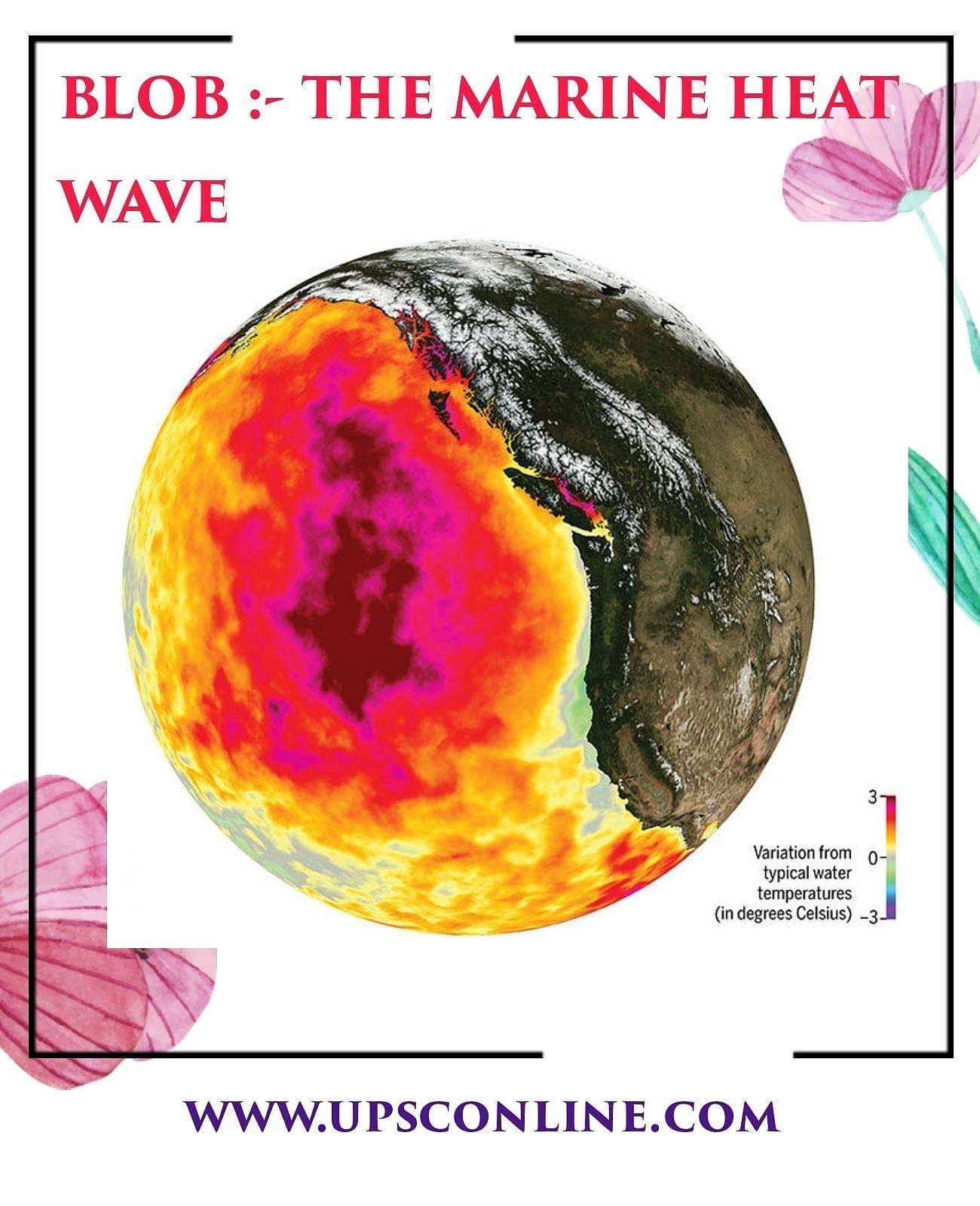BLOB : THE MARINE HEAT WAVE
Blob is a heatwave, not on land, but on the waters of the Pacific Ocean. It encompasses an area of four million square miles, extending from Alaska to California.
Between 2013 & 2016, it killed whales, sea otters, sea lions, octopuses and numerous ocean animals. Some died due to the heat, some because the warm waters encouraged an algal bloom which turned out to be too toxic
The Californian fishing industry was badly affected.
The heatwave is linked to global warming. Just as we are seeing more deadly heat waves on land
The name, was given to the phenomenon by a research meteorologist, Nick Bond
During the Blob, ocean surface temperatures were, on an average, three degrees Celsius warmer than usual. In some places, it went up as high as 12 degrees above normal. Oceans are absorbing a lot of carbon dioxide and thereby slowly becoming oceans of carbolic acid
As they absorb more heat, the oceans are expanding, and as they are fed by melting ice, they are expanding further
IPCC report also says that four Indian cities are particularly vulnerable — Mumbai, Chennai, Kolkata and Surat.
Affected the fishery in the zone from Alaska to California.
Off the coast of Oregon, it’s about three degrees Celsius (five degrees Fahrenheit) above normal. It’s very warm in the Gulf of Alaska, and the Chukchi Sea is really hot.
It looks like the layer of warm water is relatively shallow, roughly 20-30 meters deep, where as with the Blob of 2014-16 was more like 100 or more meters deeper.
As the storms start rolling through the north Pacific, the warm water temperatures will get damped down.
In most cases, as storm systems go by there’s an increase of winds that draws more heat out of the ocean
It’s not like we’ve gone into a different sort of climate regime where the weather patterns have really shifted or anything like that. But we also know that the oceans are warming; there’s a baseline upward trend in temperatures
This marine heat wave could favor another drought in California by altering the jet stream flowing across the Pacific.
The causes of the ongoing marine heat wave are varied, including natural variability, weather and long-term, human-caused climate change.
A climate cycle involving the Pacific Ocean and atmosphere, known as the Pacific Decadal Oscillation, or PDO, is a phase that increases the odds of events.
Weather patterns featuring lighter-than-usual winds allow waters to heat up. The first Blob, helped build up a strong ridge of high pressure in the upper atmosphere over the Northeast Pacific, routing winter storms away from California and plunging the state into its worst drought.
Mild waters in the Gulf of Alaska and northeastern Pacific have made for generally poor conditions for juvenile salmon & cod
In 2015 & 2016, the periodic warming of the central Pacific known as El Niño added more warmth, fueling The Blob’s growth. The heat wave finally broke when La Niña—arrived at the end of 2016, bringing storms that stirred & cooled the ocean
Warmer temperatures are threatening corals in the Red Sea, kelp forests in southern Australia, and fisheries off the coasts of New England and eastern Canada.



0 Comments